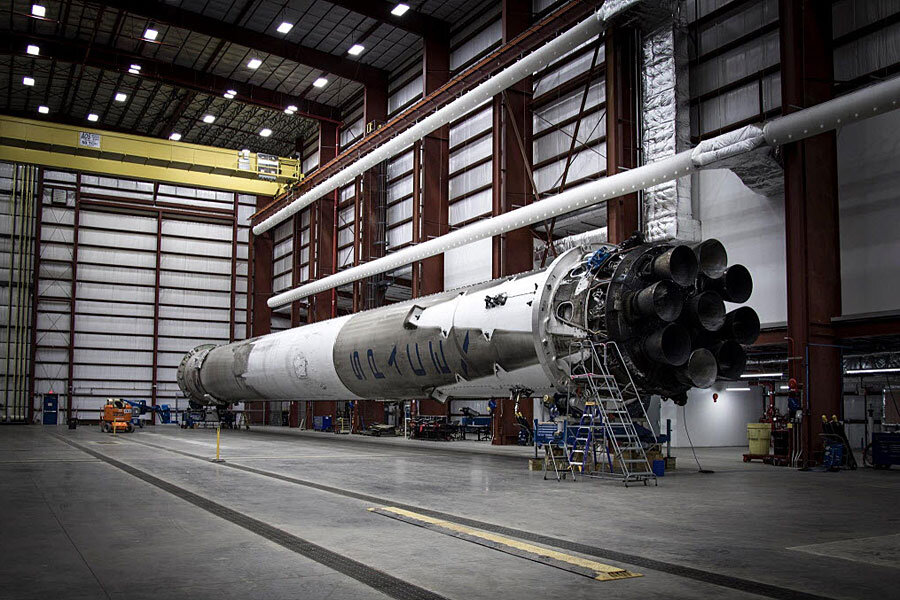With landed rocket safely back in its hangar, what's next for SpaceX?
Loading...
After landing upright in a spaceflight breakthrough on Dec. 21, SpaceX's booster rocket is back in its hangar.
But what happens when the pomp and circumstance of the Falcon 9 booster's historic landing settles down?
Landing the rocket booster is just one step in SpaceX CEO and CTO Elon Musk's grand plan. Ultimately, Mr. Musk has designs on colonizing Mars.
But the two goals are not unrelated. Returning a rocket booster from spaceflight unscathed means it, or its parts, could be used again. This could dramatically cut costs of spaceflight, something that would open new doors to space exploration.
"If one can figure out how to effectively reuse rockets just like airplanes, the cost of access to space will be reduced by as much as a factor of a hundred. A fully reusable vehicle has never been done before. That really is the fundamental breakthrough needed to revolutionize access to space," Musk said in a SpaceX article in June 2015.
During a teleconference after the Dec. 21 launch, Musk said, "The Falcon 9 rocket costs about $60 million to build — it is kind of like a big jet — but the cost of the propellant ... is only about $200,000. So that means that the potential cost reduction over the long term is probably in excess of a factor of a hundred."
Musk posted an image to Instagram of the Falcon 9 resting in its hangar on Dec. 31, announcing, "No damage found, ready to fire again."
SpaceX is not the only private spaceflight company working to make spaceflight more affordable and accessible.
Musk, who is also CEO of the electric car company Tesla, often faces off with Amazon.com founder and CEO Jeff Bezos, who has a private spaceflight company called Blue Origin. Blue Origin also successfully landed a rocket during a test flight late last year.
Both companies are trying to deliver what NASA's defunct space shuttle program initially promised. NASA's program promised reusable spaceflight vehicles with costs of as little as $9 million a flight and cargo costs of $118 per pound, they said, The Christian Science Monitor's Pete Spotts writes.
But when the program ended in 2011 after three decades, a flight cost about $1.5 billion with cargo adding an additional $10,000 per pound.
Musk says he can do better, perhaps carrying cargo payloads for between $10 and $500 per pound.
Ultimately it may come down to an economic balance. As Jonathan Coopersmith, a historian at Texas A&M University whose work focuses in part on the US space program, told Mr. Spotts:
As impressive as the Blue Origin and SpaceX demonstrations have been, it still remains to be seen "how far this shifts the economic needle" in ways that increase demand for launches, Dr. Coopersmith says. "How low can you get the price, and how many customers can you get at that price?"
This report contains material from the Associated Press.
[Editor's note: Due to a transcription error, the original version of the article misquoted the cost to build the Falcon 9 rocket. It is $60 million.]








